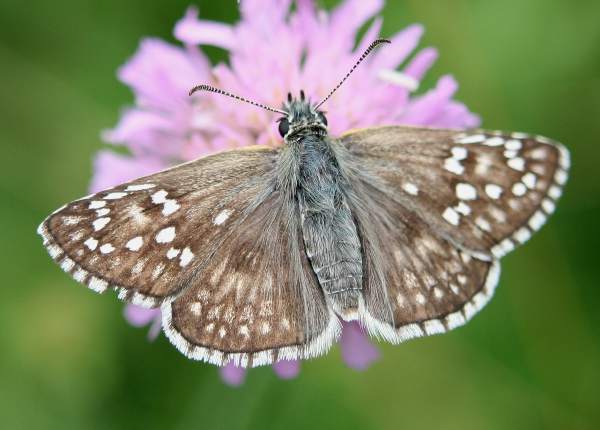

Large broadcasting of herbicides or insecticides can cause negative effect to host plant species or cause mortality (Schweitzer et al. The use of herbicides and insecticides to control invasive plants and insects can be done if used carefully (Schweitzer et al. Invasive and weedy plants in these areas can out compete native food plants therefore proper management and removal of these species should be considered. There are also managment concerns along utility rights-of-way and old railroad beds. This species does not survive fire well (Schweitzer et al. The pitch pine-oak forest community, where this butterfly occurs, requires moderate intensity fires. For example, in places where prescribed burning is used, refugia (unburned areas) are needed for many species to ensure that any life stage can survive a fire. The entire occupied habitat for a population should not be burned in a single year (Schweitzer et al. The pitch pine-oak forest community, where this moth occurs, requires moderate intensity fires. Researchers have also determined that the size, type, intensity, and timing of fires (pyrodiversity) needs to be evaluated for each site to maximize benefits to the natural community and the species it supports (Jordan et al. Researchers have determined that "an active fire management program utilizing prescribed fire with appropriate mechanical treatments" is the preferred method in pitch pine-oak forest communities (Jordan etal.


The best management strategy for this species is the management of the natural community, or habitat, where this species occurs. Conservation Strategies and Management Practices In some parts of its range excessive prescribed burning may also pose a threat (NatureServe 2022). Therefore, increased use of herbicides, invasion of weedy or invasive plants, and improper management of these areas also threaten these populations (NatureServe 2022). In New York and other northeastern states, sites such as utility rights-of-way and old railway beds are known to support this species. The main threats to this species are habitat alteration, fragmentation, and degradation (NatureServe 2022).


 0 kommentar(er)
0 kommentar(er)
